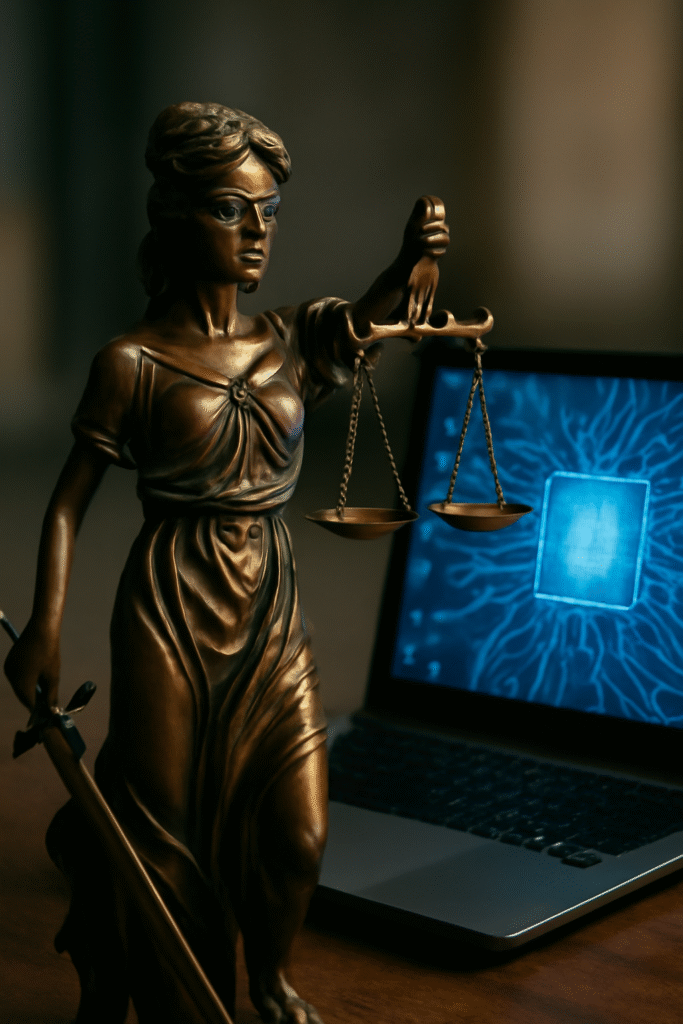Estamos num momento da história em que a tecnologia se tornou parte indissociável da vida quotidiana.
Ela molda como comunicamos, curamos, criamos e até mesmo nos percebemos.
Cada novo avanço esbate as fronteiras entre o que é humano e o que é máquina.
No entanto, em meio a esse rápido progresso, uma questão mais profunda ecoa: como podemos garantir que as nossas invenções protejam — em vez de corroer — a nossa humanidade comum?
A tecnologia nunca foi concebida para existir isoladamente.
Ela reflete as prioridades, os preconceitos e os sonhos das pessoas que a projetam.
Por trás de cada algoritmo, circuito e dispositivo existe um conjunto de decisões — algumas técnicas, outras profundamente éticas.
O progresso, portanto, nunca é neutro; ele sempre conta uma história sobre o tipo de mundo que escolhemos construir.
Duas faces do poder tecnológico

Todas as ferramentas que melhoram a vida também podem causar danos.
As tecnologias que curam doenças ou conectam pessoas em diferentes continentes podem facilmente aumentar as desigualdades, manipular informações ou violar a privacidade.
A inovação por si só não é uma virtude.
É como a usamos — e para quem — que define o seu valor moral.
A questão essencial passa de «Podemos construí-la?» para «Devemos construí-la?».
A ética deixa de ser uma limitação ao progresso e passa a ser a sua bússola.
A tecnologia como reflexo da cultura
Todo sistema digital está fundamentado na mentalidade cultural dos seus criadores.
Quando os engenheiros programam máquinas, eles transferem as suas suposições sociais para o código — muitas vezes inconscientemente.
Isso pode ser visto nas tecnologias de reconhecimento facial que identificam erroneamente mulheres e indivíduos de pele mais escura em taxas desproporcionalmente mais altas.
Esses erros não são acidentes mecânicos; eles são reflexos das dinâmicas de poder do mundo incorporadas nos dados.
A tecnologia, portanto, não é apenas um artefacto — é uma expressão cultural e levanta uma questão crucial: quem define como o futuro funciona?
Moralidade algorítmica
Muitas pessoas imaginam os algoritmos como verdades objetivas ou matemáticas.
Na realidade, eles são decisões humanas escritas em código.
Os dados, longe de serem neutros, são um registo da realidade social — e a realidade contém preconceitos.
Quando treinamos sistemas com informações tendenciosas, ensinamos as máquinas a amplificar essas distorções.
Isso exige responsabilidade ética em todas as etapas da criação tecnológica:
Desde a recolha e o processamento de dados até o design dos resultados e a interpretação dos resultados.
A inteligência artificial deve ser avaliada não apenas pela precisão, mas também pela justiça, transparência e impacto social — princípios muito mais humanos do que computacionais.
A frágil linha entre privacidade e progresso

A vida moderna é uma troca constante de dados pessoais.
Cada pesquisa, clique ou comando de voz contribui para conjuntos de dados digitais que definem cada vez mais quem somos.
Nesta realidade, a privacidade não é um luxo — é uma forma de dignidade.
A transparência, portanto, torna-se uma responsabilidade moral.
Os utilizadores merecem saber o que é recolhido, como é usado e com que finalidade.
A maioria das políticas escritas pelas empresas é deliberadamente obscura, transformando o consentimento numa ilusão jurídica.
A tecnologia ética exige clareza expressa em linguagem humana, não em letras miúdas.
O verdadeiro respeito pela autonomia significa permitir que os indivíduos decidam como as suas informações circulam.
A literacia digital e a educação cívica são os equivalentes modernos dos escudos — equipando os cidadãos para navegar em sistemas que os veem como pontos de dados em vez de pessoas.
A automação e as suas consequências humanas
A automação traz esperança e inquietação.
Embora as máquinas nos liberem de tarefas repetitivas e aumentem a produção, elas também geram ansiedade em relação ao emprego, à identidade e à justiça.
A questão do trabalho
À medida que robôs e algoritmos substituem certas profissões, comunidades inteiras enfrentam perturbações.
Mas a verdadeira crise não é a automação em si, e sim a falta de preparação para ela.
Uma resposta humana daria prioridade à requalificação, à educação ao longo da vida e a políticas que protejam os trabalhadores durante as transições.
A ética, neste contexto, significa criar um futuro em que ninguém seja descartado na busca pela eficiência.
A ascensão da colaboração entre humanos e máquinas
Quando equilibrada de forma inteligente, a automação inteligente pode realmente expandir o papel humano.
As máquinas podem lidar com o que é mecânico, liberando as pessoas para investir em empatia, invenção e raciocínio complexo.
O desafio é projetar colaborações em que as máquinas sirvam aos propósitos humanos, e não o contrário.
Responsabilidade corporativa e o papel dos criadores
O dever do design ético não se limita aos utilizadores.
Começa com aqueles que constroem os sistemas — programadores, engenheiros, decisores políticos e líderes corporativos.
Incorporar valores no design
A reflexão ética deve ser um elemento estrutural da inovação, não uma reflexão tardia.
As empresas podem institucionalizar isso por meio de comissões de ética, avaliações de risco e pesquisas multidisciplinares que antecipem os resultados sociais das novas tecnologias.
Igualmente importante é a diversidade entre os criadores — quando as equipas refletem experiências diferentes, produzem ferramentas mais justas e inclusivas.
Diálogo com o público
As novas tecnologias não devem ser lançadas em silêncio moral.
A discussão cívica aberta — envolvendo educadores, artistas, cientistas e cidadãos comuns — transforma a inovação num processo partilhado.
Quando a tecnologia surge da conversa, em vez do isolamento, torna-se um ato coletivo de imaginação baseado na empatia.

A tecnologia como um projeto moral
Em última análise, todas as invenções expressam os nossos valores.
Inteligência artificial, sistemas de vigilância, computação quântica — todos eles fazem a mesma pergunta disfarçada:
Que tipo de humanidade queremos preservar?
A consciência ética deve, portanto, evoluir juntamente com a capacidade técnica.
Educação, transparência, inclusão e justiça não são meros ideais — são princípios de design para o futuro.
Se formos bem-sucedidos, a tecnologia não dominará a vida humana; ela ampliará a sua compaixão e criatividade.
Inovar eticamente é lembrar que o progresso sem consciência é apenas aceleração sem direção.
O verdadeiro propósito da tecnologia não é o controlo, mas o cuidado.
